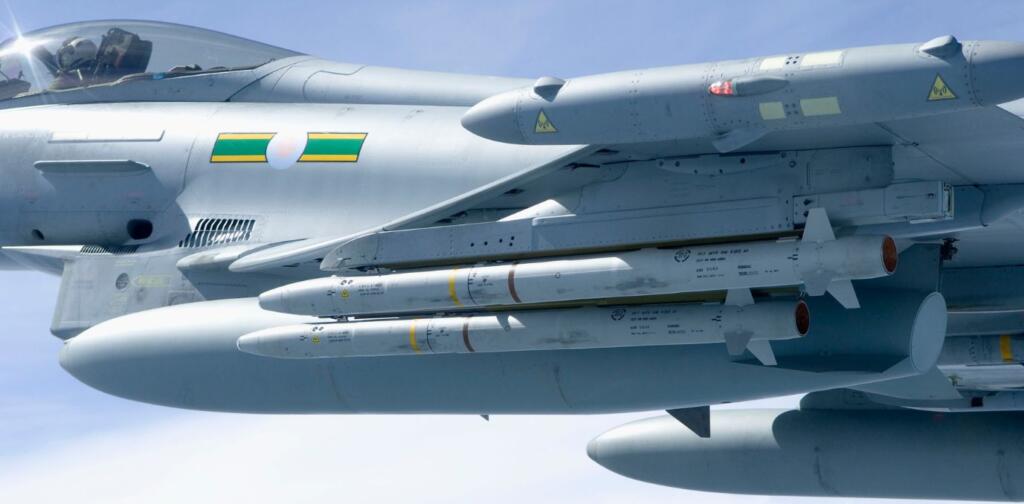India has made significant strides over the last few years towards modernizing its military capacity. In fact, the policy by India to gradually drop reliance on foreign military equipment and emphasize local manufacturing is well exemplified by the Indian Air Force decision to replace the Russian missiles with indigenous or alternative ones.
Phasing Out Russian Equipment
India has always depended on Russia for a significant percentage of its military hardware. However, as the geopolitical dynamics are shifting and the demand for cutting-edge technology is on the rise, the IAF is looking to modernize its arsenal. Among such important decisions is the replacement of the Russian R-73 short-range air-to-air missile, which has traditionally been mounted on the Su-30MKI fighter jets, with the British-made Advanced Short Range Air-to-Air Missile (ASRAAM).
Why ASRAAM?
The ASRAAM presents a step change in the air combat ability for some reasons:
Integration and Deployment: The ASRAAM can be easily integrated into Su-30MKI by making minimal modifications. ASRAAM being a missile with heat seeking capabilities it does not depend on Radar guidance systems for the completion of its work. Such missiles are smoothly deployed at the operational stages as well.
The ASRAAM is constructed with a built-in close-range combat mechanism for the high maneuverability requirements seen in modern air warfare tactics. Maneuvering allows pilots to outperform opponents in dogfight maneuvers.
Range and Accuracy: The ASRAAM’s maximum range is more than 25 kilometers, but its ideal conditions can enable engagements at distances of up to 50 kilometers. For the R-73, the maximum range is only about 30 kilometers, which limits its tactical maneuverability. The infrared homing guidance of the ASRAAM is much more sophisticated than that of the R-73, thus the former is better suited to “fire-and-forget” capabilities because it locks onto targets pre-launch and tracks them through countermeasures.
Inside it is a high-impulse solid-propellant motor, which gives it superior speed and maneuverability that are important qualities for dogfighting. In complex, multiple-angle engagements it lets the pilot be at liberty to use the tactic of the positioning for countering purposes. The infrared imaging seeker also increases immunity to countermeasures during operations thus making it favored during engagements.
Integrated Modernization Plan
It is part of the overall program known as ‘Super Sukhoi’. It aims to enhance the capabilities of the Su-30MKI fleet. This includes changes in avionics and radar systems besides enhancing its combat effectiveness. The ASRAAM integration would include the development of software to be used on the already existing Su-30, in coordination with MBDA, the manufacturer of the missile, for easy induction into the IAF’s operational systems.
Matra BAe Dynamics UK (MBDA)
MBDA is one of the largest joint venture units found in Europe, combining the three major players in the aerospace and defense sector; these are Airbus, BAE Systems, and Leonardo. The firm was formed in 2001 for the development of advanced missile systems and boosting European defense. The largest shareholders hold 37.5 percent each: Airbus and BAE Systems. The next would be Leonardo with a holding of 25%.
This partnership gives the participating companies an avenue where they pool together their technical expertise and experience to help propel innovation in missile and other defense products. MBDA, widely recognized for its innovation in many air-to-air, air-to-ground, and sea-to-sea missiles, among others, makes the evolving military force needs that military forces are currently looking for.
This will enable MBDA to pool the strengths of its shareholders toward greater effectiveness in operations and actions toward strategic autonomy of European nations in matters of defense. This venture is very instrumental in maintaining a lead in the rapidly changing global security picture. It continuously pushes forward in defense technology through its research and development endeavors to arm the forces of Europe with state-of-the-art capabilities.
Strategic Implications
India’s switch from Russian to British missiles is not only a technical upgrade, but it reflects a strategic maneuver in diversifying defense procurement sources. India’s efforts at de-linking itself from one single source of supply by taking massive strides toward self-reliance resonate well with the “Make in India” scheme initiated by the government, which seeks to boost in-house defense production capabilities.
While this move may cause some ripples with Russia, modernization of the military capabilities of India is required in response to emerging threats. It will be significant for the IAF to maintain its credibility and state of operational preparedness as it enhances its defense structure.
India’s pursuit for self-manufactured military equipment, as well as diversified supply lines, is a landmark moment in its defense policy. In this, India looks to enhance military capacities while making giant strides towards strategic self-reliance through indigenous production by adopting cutting-edge technologies such as the ASRAAM. This very approach will be able to address the challenge of emerging security issues as well as provide a basis for sustainable defense industry building in India.
